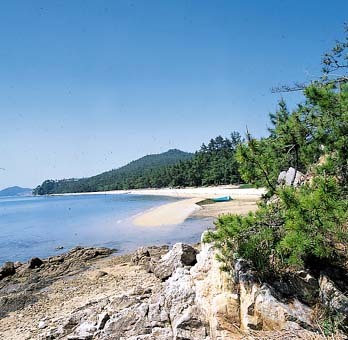Leprosy treatment facility on Sorok Island gets new lease of life
SOROK ISLAND, South Jeolla Province ― Just decades ago, Hansen’s disease, more commonly known as leprosy, was considered a curse from nature, subject to prejudice and discrimination.
The disease is now almost eliminated from the country and is controllable with proper medication and nutrition.
Although there are 13,300 people nationwide diagnosed with the disease, 83.4 percent are over 60 years old. According to the Ministry of Health and Welfare, about five people get the disease every year and that number is expected to drop to zero in the near future.
The 3.79-square-kilometer Sorok Island off South Jeolla Province was named for its resemblance to a deer. But its history isn’t so beautiful: It was a detention camp for Hansen’s disease patients and is still the largest community and treatment facility for them. Currently, there are 587 patients residing on the island, taken care of by 128 medical staffers.
The island, just a three minute boat ride from the Nokdong Port, holds many sad tales.
It was established during the Japanese colonial period (1910-1945), with patients suffering doubly for being both Korean and “cursed”. Many were coerced into having vasectomies. Their organs were displayed after death, a practice that continued until 1996. Others were beaten to death while drafted as construction workers for exotic gardens and monuments. Patients were often confined in crammed cells, enduring the filthy environment and extreme pain that comes with the disease.
 |
Sorok Island off the southern coast |
“Some residents even dread to go near old facilities because they believe that the places are haunted. They claim that they can hear the dead people crying on rainy days,” a spokesman of the National Sorokdo Hospital said.
But the island has transformed into a brighter and less tragic spot: It has become a tourist destination.
About 600,000 people visit the island every year. From kindergarteners dropping by for picnics to elderly people seeking peace, the island is always full of “outsiders.”
“The picnickers contributed to breaking the barriers between the patients and non-patients. Nowadays no one is scared of infection or coming across the patients on the streets,” the spokesman said.
The government has contributed to the change, too, by putting tens of billions of won into renovating the Sorokdo hospital and residents’ houses.
The hospital has become a useful facility for non-Sorok island residents, performing more than 100 annual cataract surgeries and other procedures.
On Friday, Health and Welfare Minister Chin Soo-hee visited the island to share her sympathy and care for the patients. In contrast to their guarded demeanor of the past, the patients warmly greeted the minister.
“The medical staffers are now my family, looking into the deepest part of me and are always there for me. Thank you for them,” Park Se-ju, an inpatient at the hospital, told Chin.
Chin replied by promising to dispatch eight more nurses to the hospital.
“When I was in college, I first learnt about the disease through some pieces of literature. After 40 years, I have finally come here,” she said.
“I am also glad that they have opened up to others and cared about them. We have been late in understanding them, but we will work hard,” she said.
By Bae Ji-sook (
baejisook@heraldcorp.com)








